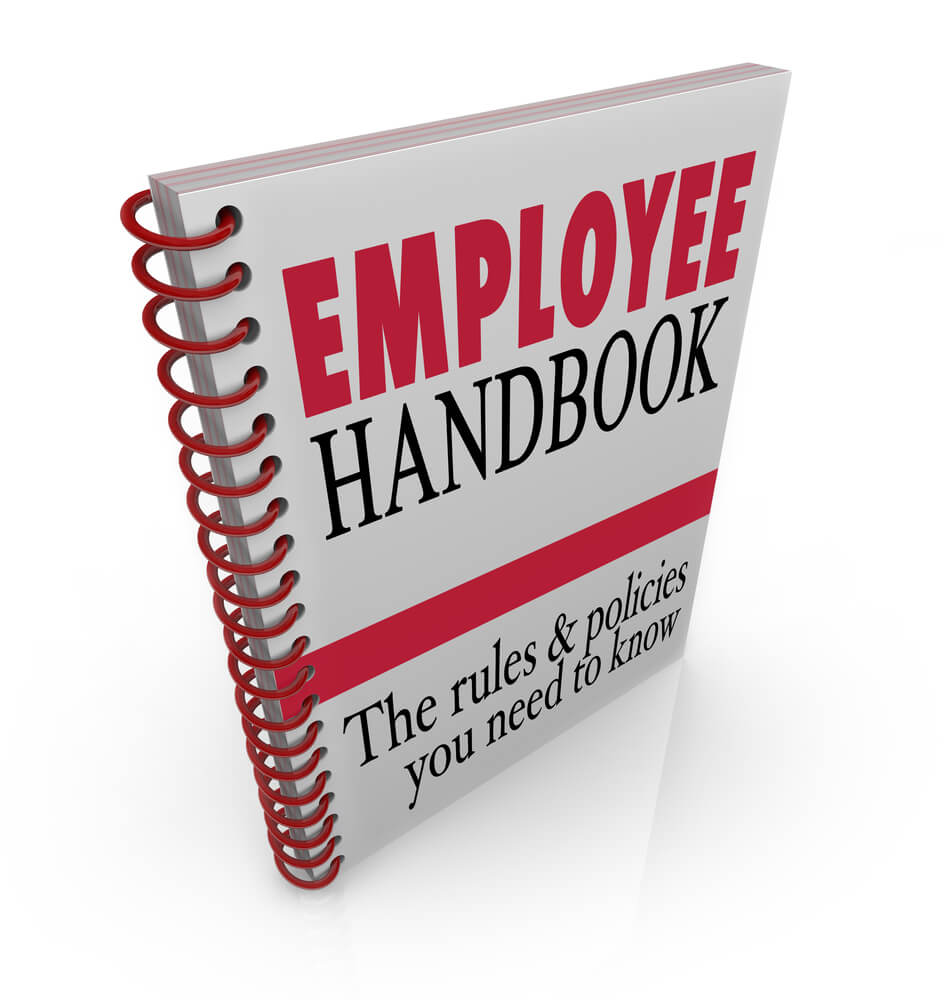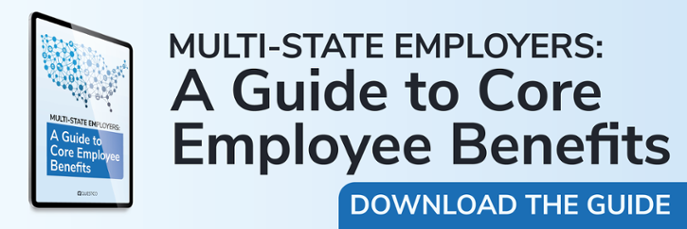Topic Outsourcing HR / PEO,
Multi-State Employers: Your Guide to Drafting Employee Handbooks in 2024

January 25, 2023 | By Questco

As most Human Resources (HR) staff know, creating compliant multi-state employee handbooks is never easy. Sadly, 2024 is poised to turn drafting employee handbook revisions into an even bigger HR migraine.
That’s right: state laws have changed since January 1, 2023.
Some legislative initiatives amend existing laws, while others implement new legal requirements.
These changes include:
- Variations of the Crown Act prohibiting discrimination based on hairstyle and texture,
- New employee leave laws,
- Cannabis laws that address off-work use,
- Data protection laws, and
- Pay equity protections.
As if that were not enough, multi-state employers must pay attention to local employment laws and the various state laws.
For example, upstate New York has a minimum wage of $14.20 compared to New York City’s minimum wage rate of $15.
The following briefly describes legislative initiatives that employee handbooks must address and how to handle conflicts between state and federal rules.
You will also learn why a professional employer organization (PEO) is an invaluable partner for multi-state employers.
Requirements for Multi-State Employee Handbooks
No federal or state employment laws mandate a legal requirement that employers create an employee handbook.
However, if you do publish one, it must comply with all the laws applicable to your business and your employees. That means federal employment laws as well as state and local laws.
How much do these state laws vary?
For example, let’s look at the different employment law regulations applied to Utah, New York, and California.
Handbook Requirements for Utah
Recognizing the protected characteristics of federal anti-discrimination laws is paramount to an employee handbook’s compliance. These laws include:
- Equal Employment and Anti-Discrimination policy (Title VII Civil Rights Act), including a Sexual Harassment Policy
- Family Medical Leave Act (FMLA)
- Military Service Leave (USERRA)
- Jury Duty Leave (JSIA)
- Immigration Law Compliance (INA)
In addition, Utah also requires the following policies:
- Outside Employment Policy,
- Meal and Rest Breaks (Fair Labor Standards Act),
- Voting Leave, and
- Witness Duty Leave.
Handbook Requirements for New York
If you have employees covered by New York state laws, your employee handbook must include all the requirements shown above in the Utah handbook, plus the following:
- Paid Time Off,
- Paid Sick Leave,
- Paid Family Leave,
- Organ and bone Marrow Donor Leave,
- Domestic Violence Leave,
- Crime Victim Leave,
- Voluntary Emergency Responders Leave, and
- Retirement Savings Plan.
Handbook Requirements for California
If your payroll includes employees covered by California’s employment laws, your employee handbook must contain all the above-noted requirements that apply to Utah and New York, plus the following:
- Health and Safety Policy,
- Lactation Accommodation,
- School Activity Leave,
- School Appearance Leave,
- Adult Illiteracy Leave,
- Alcohol and Drug Rehabilitation Leave,
- Bereavement Leave, and
- Home Office Reimbursement.
 Handling Conflicts between State Employment Laws
Handling Conflicts between State Employment Laws
As a multi-state employer, you may face conflicts between the different state employment laws that cover your employees. Employers usually handle these conflicts by drafting generic handbooks with addenda or umbrella handbooks.
Generic Handbooks with Addenda vs. Umbrella Handbooks
Generic employee handbooks cover the common areas between state and federal employment laws. Then, HR departments add state-specific addenda for each state where HR compliance comes into play.
Unfortunately, generic handbooks may lead to the employee perception of unfairness in those instances where employees in one state receive more favorable leave policies than in other states.
On the other hand, umbrella employee handbooks apply the most generous state and federal laws to all employees regardless of where they live. This creates a feeling of equity among employees but does mean you are offering benefits in states where they aren’t legally required.
Handling Conflicts between State and Federal Employment Law
While HR may look for conflicts among state laws, it is also vital to track differences between state and federal employment laws.
For example, the Fair Labor Standards Act (FLSA) mandates that employers keep employee records for a certain period. Some states have passed additional employee protections:
- Some states require more expansive retention rules than federal law. The additional areas may include racial and gender classes under equal pay laws, family and medical leave provisions, and other employment law-related records.
- So far, fifteen states plus the District of Columbia have passed Ban-the-Box laws. These laws mandate the removal of conviction records from the pre-interview application form.
- Other states passed Service Letter Laws that require employers to provide former employees with letters showing work history, pay rates, and reasons for termination.
What about Out-of-State Remote Workers?
Remote workers are ubiquitous in today’s workplace.
But which state’s employment laws apply to out-of-state remote workers?
Each state creates the rules that impact:
- The employer’s registration to do business within the state,
- How employers hire employees who reside in that state,
- Discrimination in hiring practices,
- The pre-interview application, and
- Other employment rules regarding payroll taxes, healthcare benefits, and workers’ compensation insurance.
These regulations may include various tax laws, employment applications, immigration, and employment verification, employment interview restrictions, and document retention, just to name a few.
In general, out-of-state remote workers are subject to the laws of the city and state where they have a physical work location and where they perform work.
Simplifying Your Multi-State Employer Handbook Compliance
It is easy to see why tracking evolving state and federal legislation is a major headache for multi-state employers.
Some companies turn to employment lawyers to handle multi-state compliance, an expensive proposition!
That’s why so many multi-state employers are outsourcing specific HR tasks to professional employer organizations (PEOs).
Unlike lawyers, PEOs provide holistic HR support for multi-state employers.
For one thing, employers do not have to register with accounts in each state where an employee resides.
PEOs staff experts in multi-state payroll processing so in-house HR can focus on core priorities.
Medical benefits are a breeze as the PEO maintains national group health coverage that usually surpasses coverage that may otherwise be available to your employees.
Concerning workers’ compensation insurance, the PEO coverage does not require an upfront deposit which saves you money and helps with cash flow. You join the PEO’s workers comp policy, meaning you adopt their experience modifier rate (EMR). If your company has a history of claims, this could reduce your payroll premiums.
Perhaps most importantly, the PEO staff are experts in the field of multi-state HR compliance and know how to track and comply with each state’s requirements.




